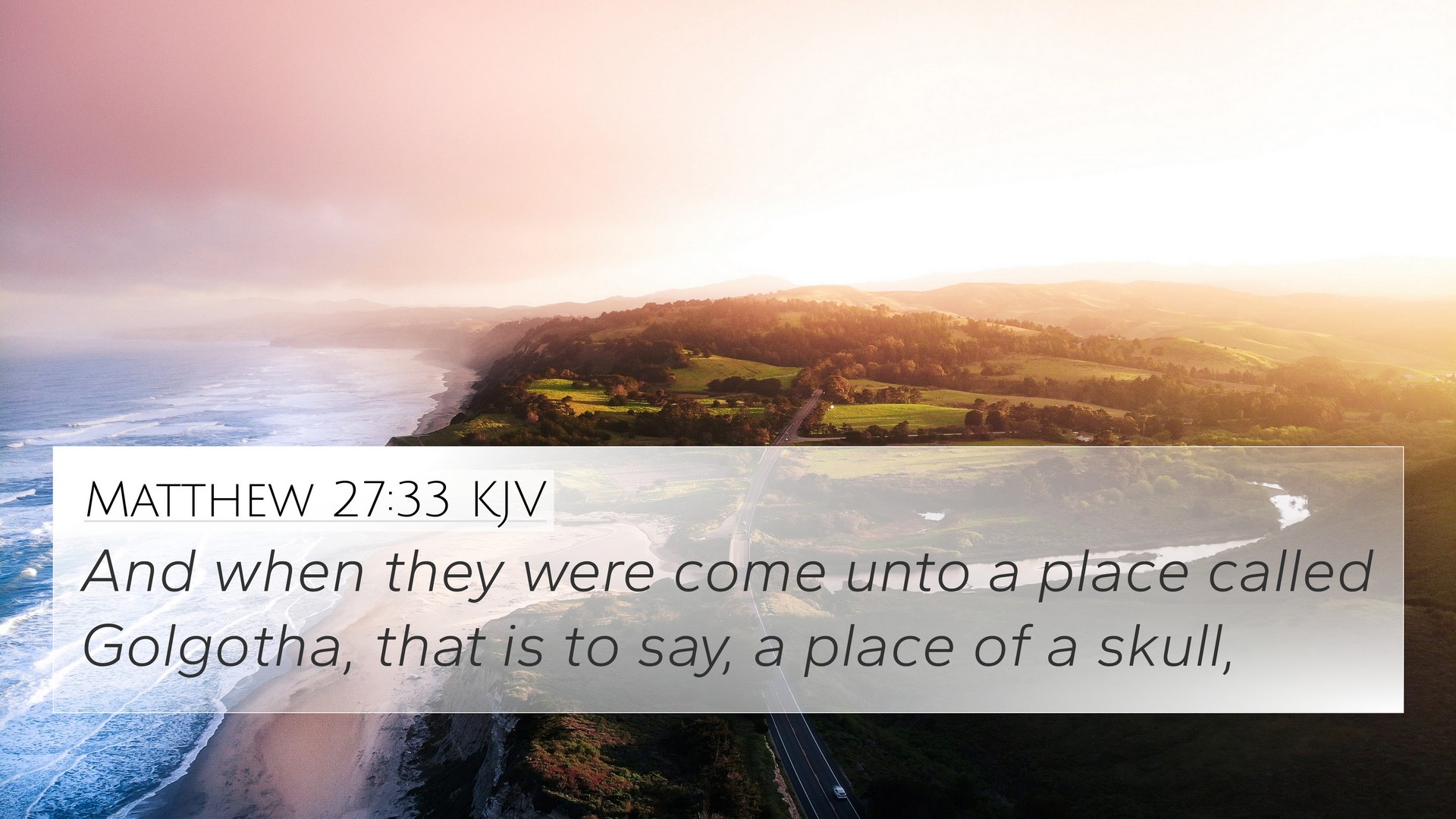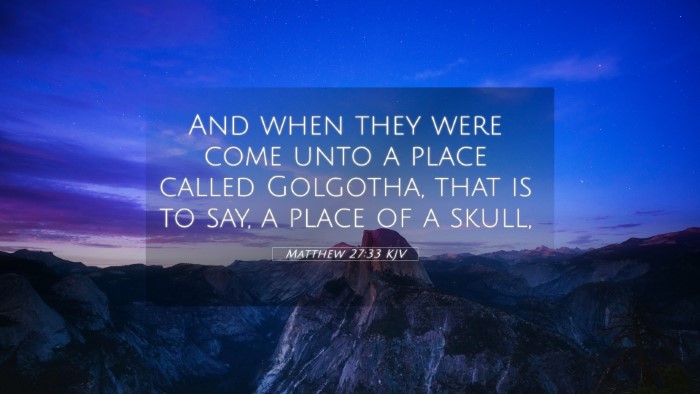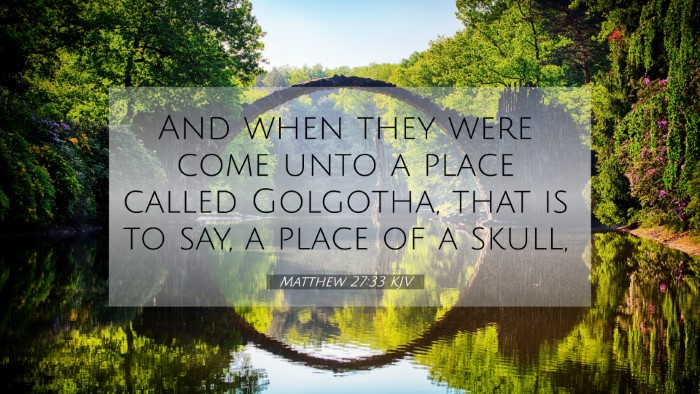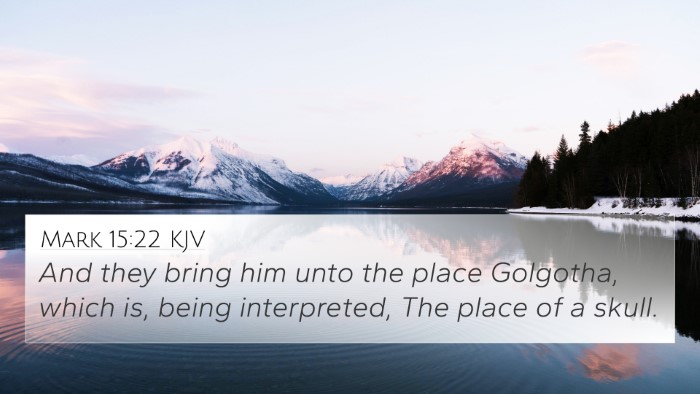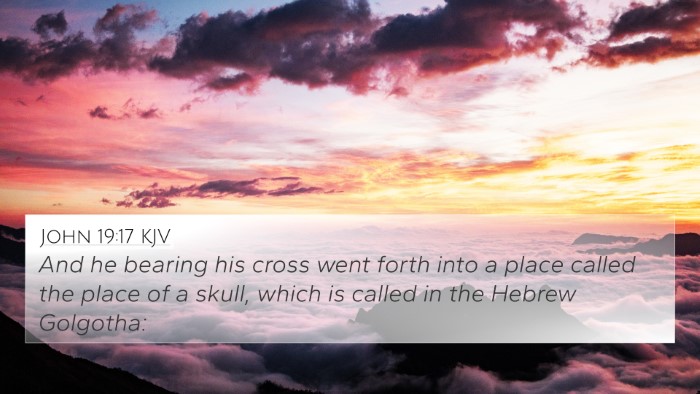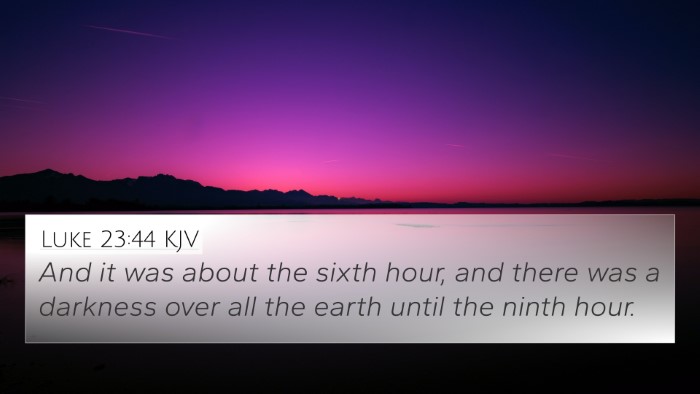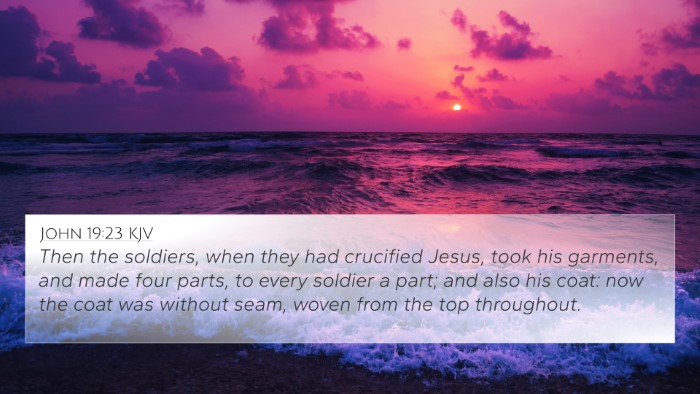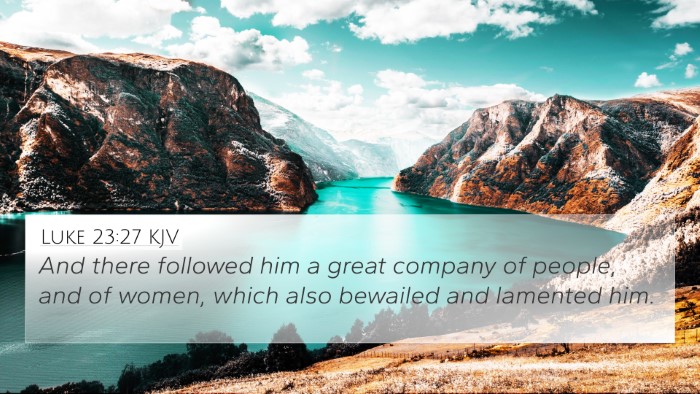Understanding Matthew 27:33: A Deep Dive into the Meaning
Matthew 27:33 states: "And when they had come to a place called Golgotha, that is to say, a place of a skull," This verse is a significant moment in the Passion narrative, reflecting both historical and spiritual elements important for interpretation.
Contextual Overview
The context of this verse is essential for understanding its implications. Jesus is being led to His crucifixion after being condemned. The term "Golgotha," which means "place of a skull," not only identifies the geographic location of the crucifixion but also symbolizes the gravity of the events about to unfold.
Insights from Public Domain Commentaries
-
Matthew Henry: Henry emphasizes the somberness of Golgotha as a location where death was prominent. The name suggests a place associated with mortality, highlighting the seriousness of Jesus's sacrifice.
-
Albert Barnes: Barnes points out that Golgotha was notorious as a place of execution. It's notable that Jesus was presented at this specific location, signifying the fulfillment of Old Testament prophecies concerning the suffering Messiah.
-
Adam Clarke: Clarke interprets the location of Golgotha not just as a physical spot but as a representation of the consequences of sin. The skull symbolizes death and ultimately reminds believers of the cost of redemption.
Thematic Connections with Other Bible Verses
This verse connects to several key themes in the Bible, offering insights into suffering, atonement, and the fulfillment of prophecy.
- Isaiah 53:5: "But he was wounded for our transgressions, he was crushed for our iniquities..." - Directly addresses the reason for Christ's suffering at the cross.
- John 19:17: "And he bearing his cross went forth into a place called the place of a skull..." - Provides additional context and confirms the location during Jesus’ march to crucifixion.
- Hebrews 13:12: "Wherefore Jesus also, that he might sanctify the people with his own blood, suffered without the gate." - Links the external aspect of Christ's crucifixion to the act of sanctification for believers.
- Luke 23:33: "And when they were come to the place, which is called Calvary, there they crucified him..." - Shares the geographic and event parallels, showing the universality of the narrative.
- 1 Peter 2:24: "Who his own self bare our sins in his own body on the tree..." - Reinforces the concept of atonement through Christ’s suffering.
- Psalm 22:16: "For dogs have compassed me: the assembly of the wicked have enclosed me: they pierced my hands and my feet." - An Old Testament prophecy pointing to the crucifixion.
- Matthew 20:19: "And shall deliver him to the Gentiles to mock, and to scourge, and to crucify him..." - Pre-emptively describes the events leading to Golgotha, emphasizing the justice and betrayal involved.
Spiritual Implications
Understanding Matthew 27:33 invites believers to reflect deeply on several spiritual implications:
- The Weight of Sin: The 'place of a skull' represents not just a location but the serious consequences of sinfulness, reminding us of the severity of life's spiritual battles.
- The Cost of Redemption: Jesus's journey to Golgotha exemplifies the ultimate sacrifice made for humanity's sins, urging believers to appreciate the gravity of grace.
- Fulfillment of Prophecy: This verse signifies the culmination of scriptural prophecies regarding the Messiah's suffering, linking Old Testament predictions with New Testament narratives.
Cross-Referencing Matthew 27:33
When studying this verse, it’s beneficial to engage in cross-referencing. Below are seven key techniques that can aid in understanding this verse and its implications:
- Bible Concordance: Utilize a concordance to find related scriptures that discuss the crucifixion.
- Bible Cross-Reference Guide: Consult guides that outline the connections between various scriptures and themes.
- Cross-Reference Bible Study: Approach the text diligently, comparing it with similar verses across the Bible.
- Bible Reference Resources: Investigate commentaries and biblical history resources that shed light on the traditions surrounding Golgotha.
- Bible Chain References: Follow sequences of verses that narrate the story leading to Christ’s crucifixion.
- Cross-Referencing Bible Study Methods: Implement thematic studies that explore the concept of sacrifice and redemption in biblical texts.
- Detailed Cross-Reference Between Gospels: Engage in a comparative study between the Gospel accounts of Jesus’s crucifixion.
Conclusion
Matthew 27:33 is a powerful verse that encapsulates not only the historical event of Jesus’s crucifixion but also the profound theological and spiritual significances behind it. By employing scripture cross-referencing and understanding its connections within the larger biblical narrative, one can gain a more comprehensive grasp of its meanings and implications. As believers reflect on this verse and its related scriptures, may they find a renewed appreciation for the sacrifice of Christ and the hope it brings.
